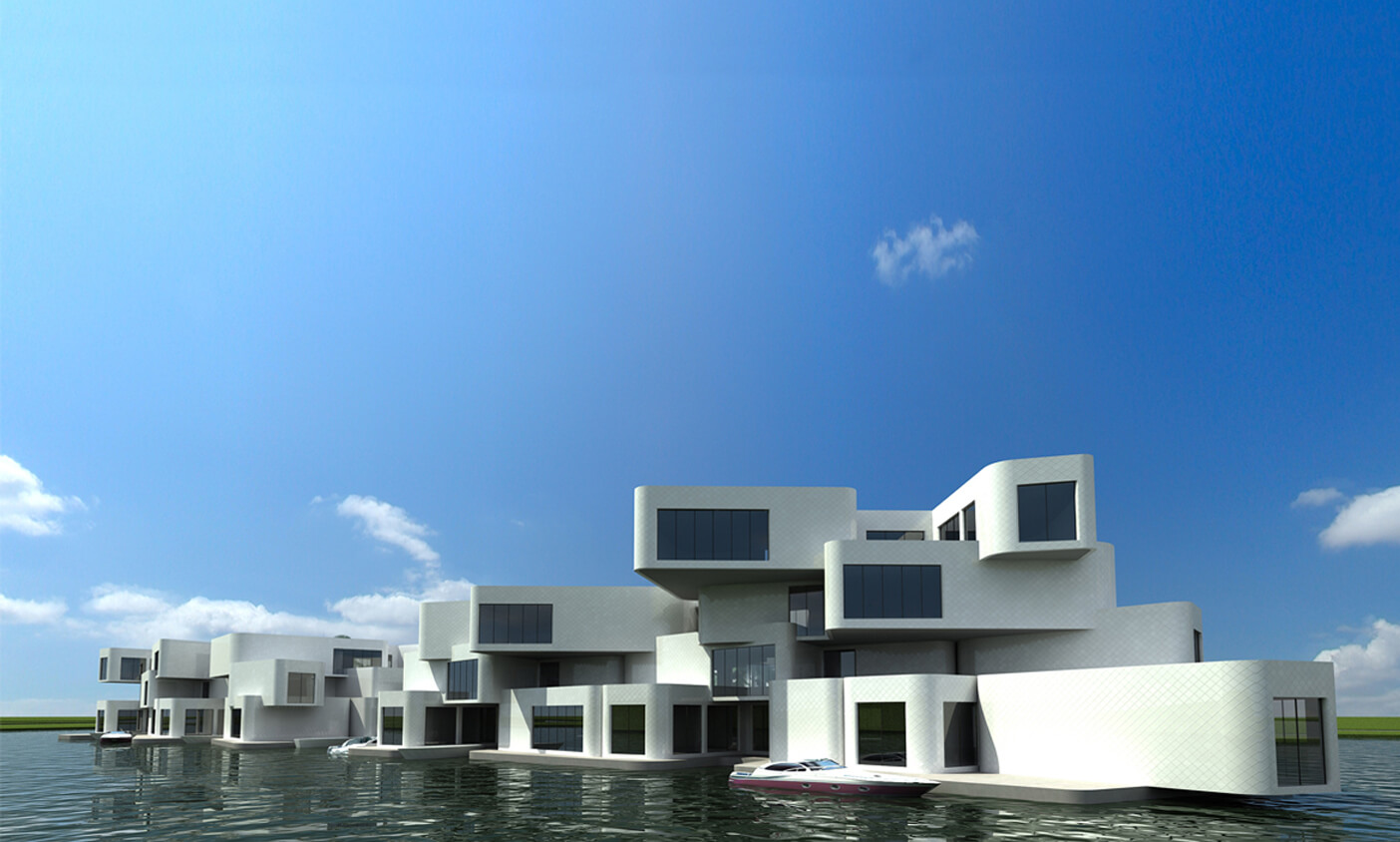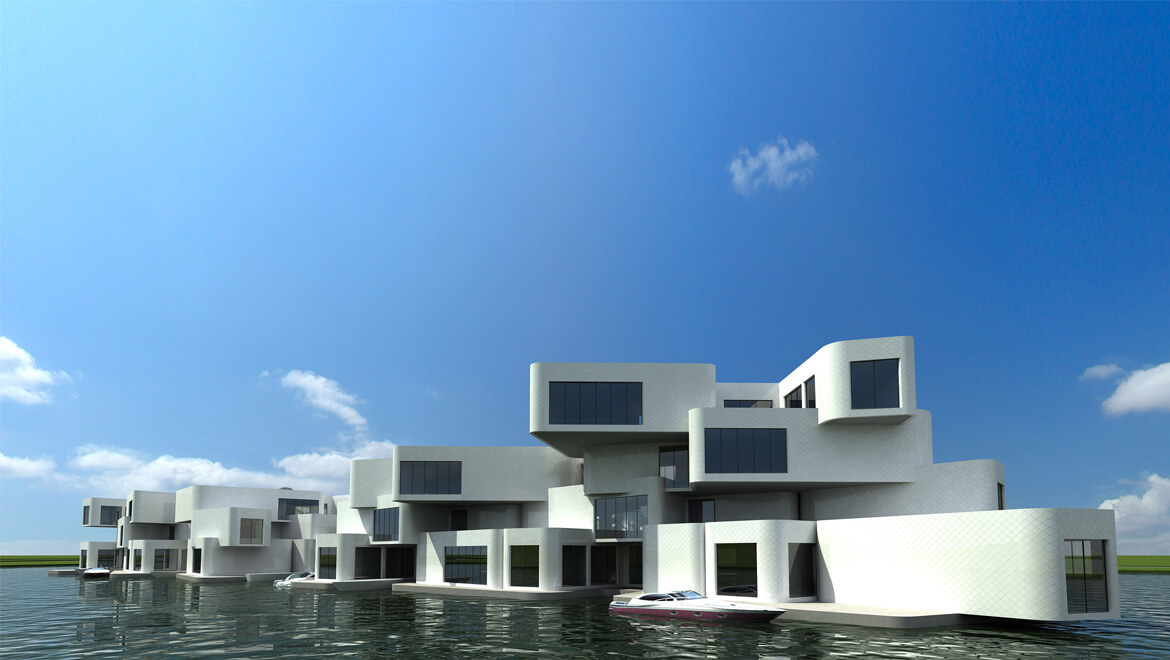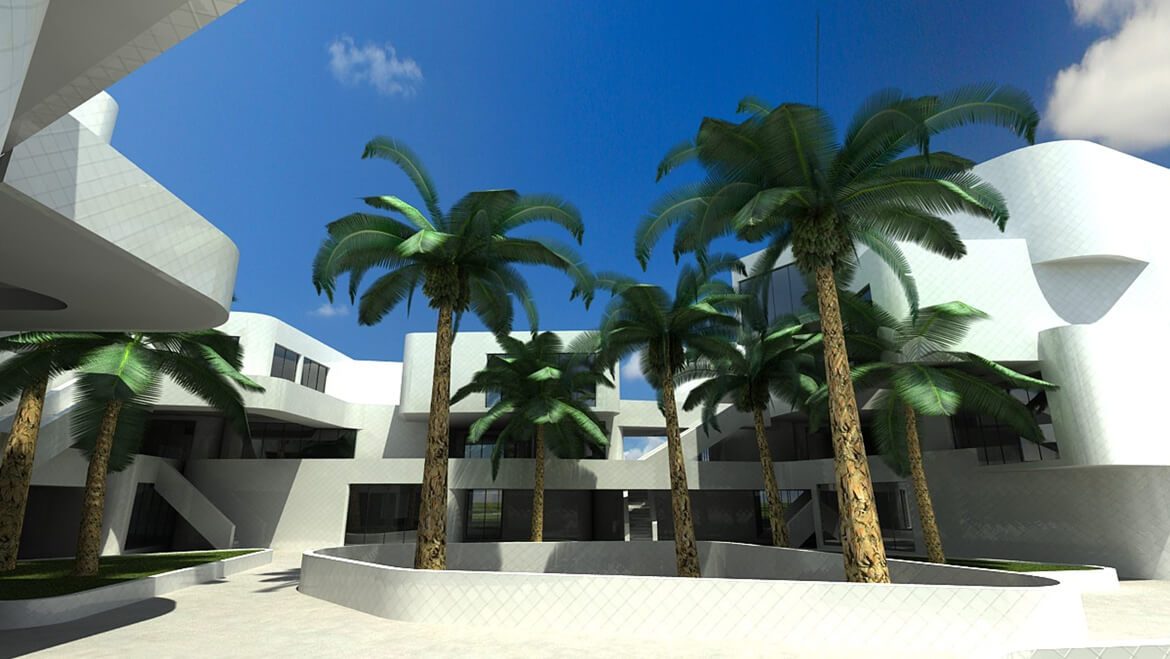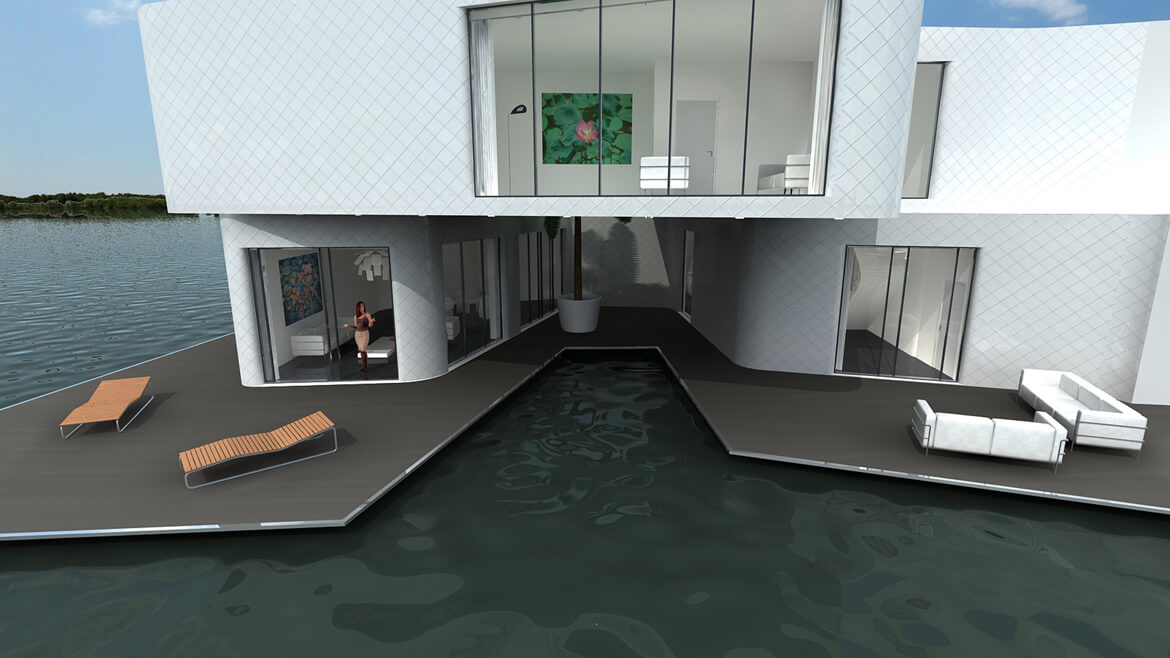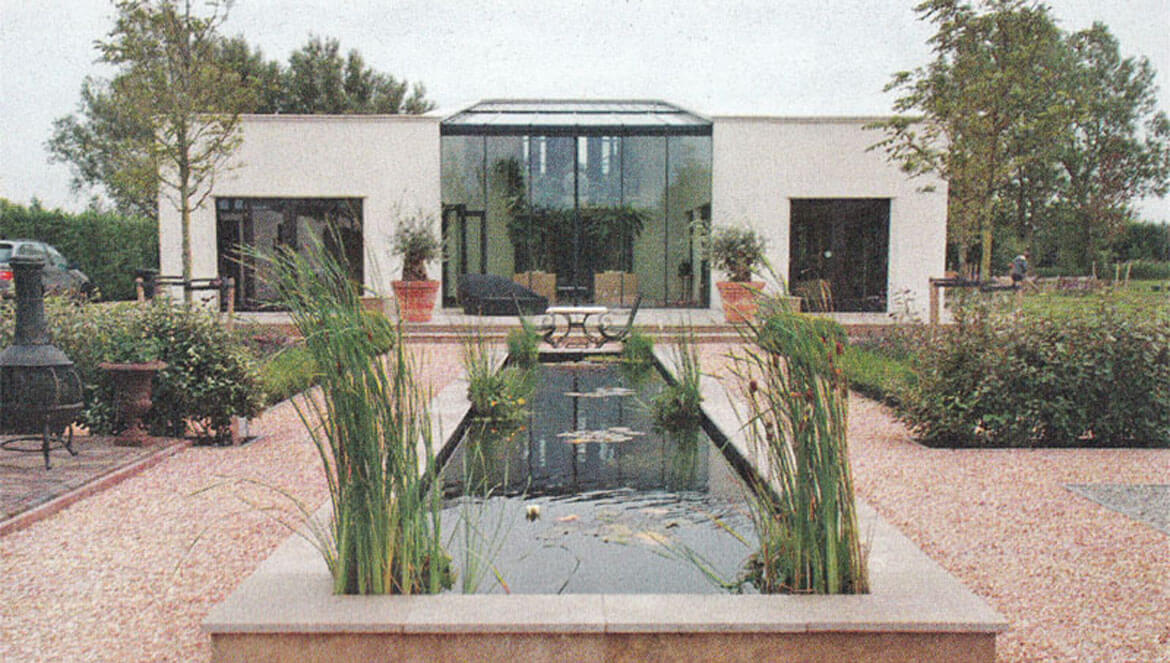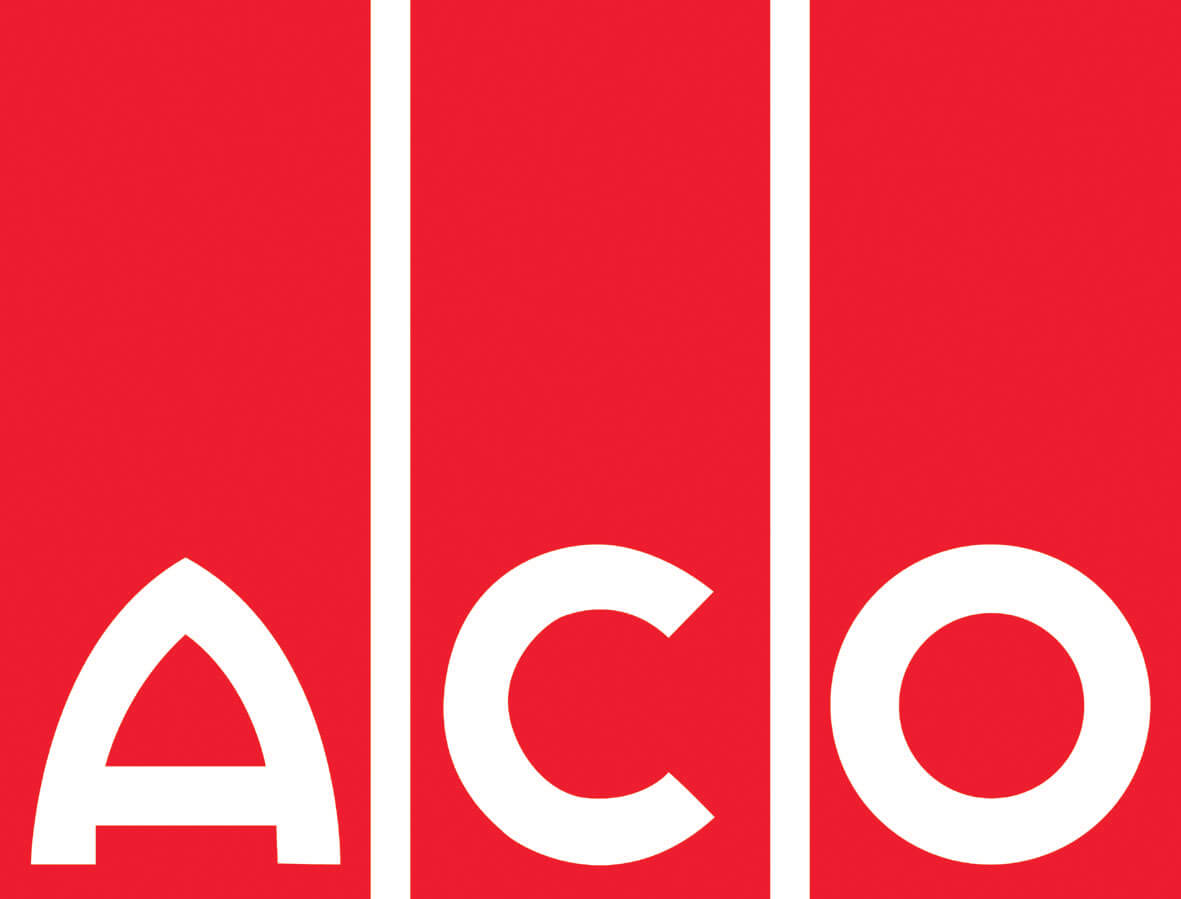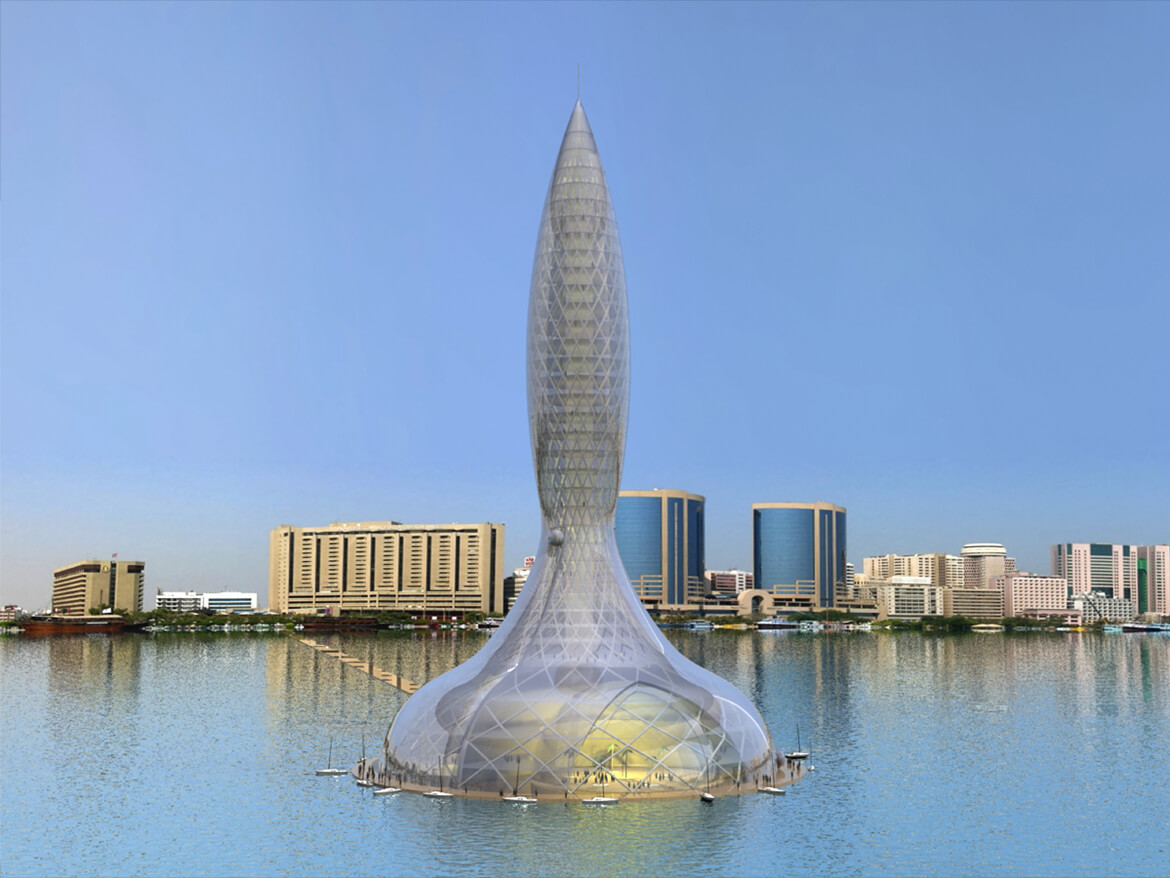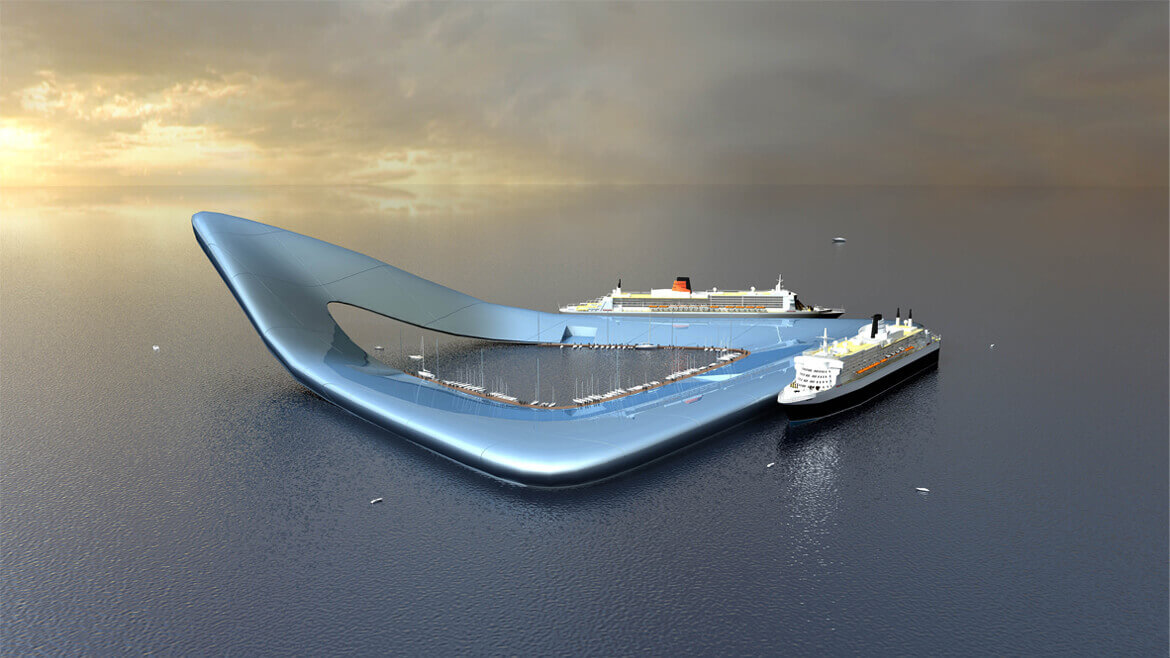Noah’s Architecture: The Futuristic Designs That Will Save Us From The Next Sandy
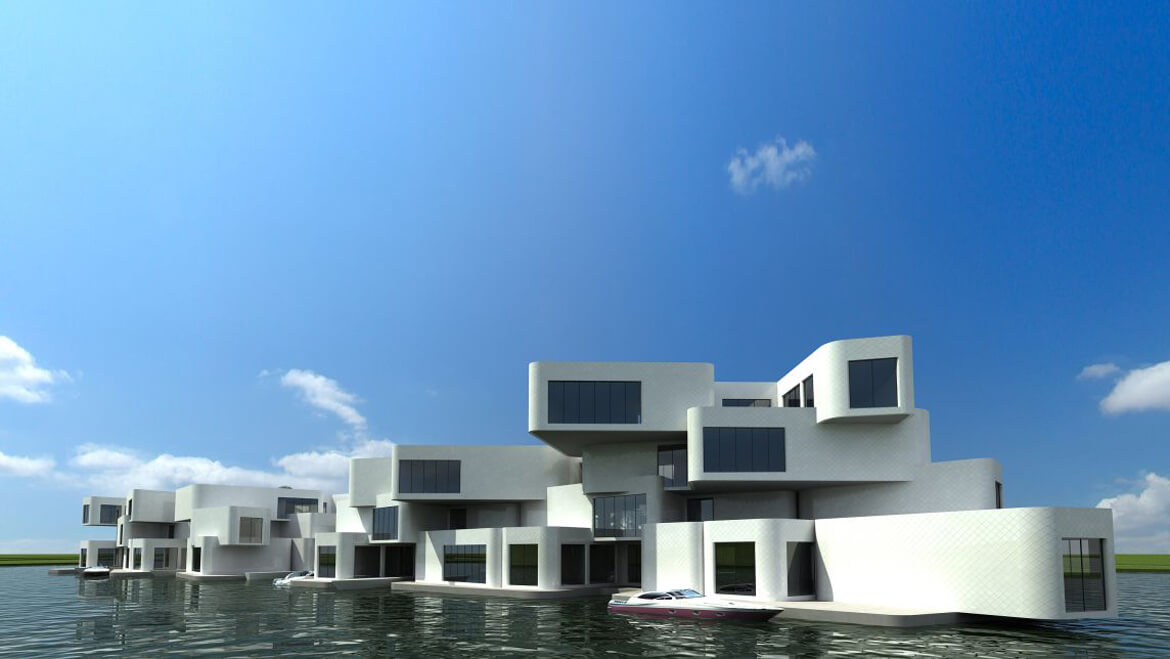
Architizer, Lamar Anderson, Oct 2012
Vincent Callebaut’s Coral Reef Island, a proposal for Haiti. Photo courtesy of Vincent Callebaut
What is it about water that captures our imaginations? Yes, we certainly have been warned about rising sea levels and the 100-year flood’s awkward rechristening as the 3-to-20-year flood. But if stats really got through to us, obesity wouldn’t be a crisis and we would all have retirement savings. When it comes to visionary designs for the future of the built environment, flood scenarios dominate the design briefs—standard-issue earthquakes, tornadoes, and volcanoes just can’t catch a break.
In our collective architectural imagination, the next century looks like a fanciful sci-fi resort in which we jet from floating airports to floating Scottish villages, soak in pools that float (wink-wink) in rivers, and furnish our floating apartment complexes with flat packs we bought in floating IKEAs.
And now that Post-Tropical Cyclone Sandy has filled New York’s subway tunnels with water, it doesn’t seem so farfetched to imagine a fleet of gondolas sending commuters down a river underneath Broadway (which would certainly be an interesting entry in our Architecture + Weather category in the A+ Awards!). So, in preparation for only the most picturesque of disaster scenarios, we bring you some of our favorite futuristic designs for the all-waterfront property of tomorrow.
The Belgian architect and vertical-farming enthusiast Vincent Callebaut thinks planners in Haiti should take a cue from the organic architecture of coral reefs. His proposal calls for a modular reef built atop seismic piles on an artificial pier in the Caribbean. In Callebaut’s scheme, two wavy hills of wood-clad metal modules bookend a central valley built out with terraces and cascading food-producing gardens. The modules form passive houses that could shelter more than one thousand Haitian families come the next catastrophe.
As a lowland continually beset by flooding, the Netherlands already has its share of floating houses and villas. “The toolbox of floating developments in Holland is still not so large… concepts with high density are not available.” WaterStudio says in its design brief. So the firm is working on the Citadel, which will be Europe’s first floating apartment complex. Part of a 1,200-house urban development called New Water in the city of Westland, the project will push beyond the country’s usual relationship with its excess water—constant pumping—and intentionally flood the site. The apartments will be built from 180 modules surrounding a courtyard that will be anchored on a concrete caisson foundation. Like the luxury watercraft it actually kind of is, the 60-unit Citadel will rise and fall with the water, offering its residents wetland views and berths for small boats.
After the 2010 earthquake in Haiti, Tangram 3DS and E. Kevin Schopferwanted to boost the country’s resilience with an adjacent floating city in the Caribbean. The designers imagine this Harvest City as a solar- and wind-powered mini-metropolis for 30,000, complete with its own agriculture and light industry. Their plan calls for four zones of concrete-hull modules that span a diameter of two miles, linked by a linear system of canals. Residents would live in four-story tilt-wall concrete structures, run light-industry operations in Quonset hut warehouses, socialize in the harbor city center, and farm crop circles—dubbed “floating pie pans”—filled with topsoil.
This hotel/greenhouse/waterborne Slinky by the Russian firm Remistudiocan withstand tidal waves and grow vegetables.
Designed to ride out another Katrina, the New Orleans Arcology Habitat(NOAH) combines flood-ready buoyancy with an open triangular structure that sends severe winds straight through the center of the building. Proposed by E. Kevin Schopfer, the massive mixed-use complex would provide housing for 40,000 and include three hotels and casinos, cultural facilities, a district school system, and a health-care facility on the Mississippi River. Also: organic gardens.
For those of you who prefer tiny houses to floating high-rises, a Japanese company called Barier has the solution for you. Barier’s 32-sided, 540-square-foot watertight houses can survive earthquakes, will stay upright in a tsunami, and come with a reassuring slogan: “Soccer ball-shaped houses strong with disasters.”
No discussion of next-next-gen splashy, speculative urban aquatic design would be complete without Vincent Callebaut’s floating lilypad city for the year 2100, when 50,000 of Callebaut’s climate refugees will flee land to found their own eco-city. As you would expect from any decent post-apocalyptic Eden, this one thrives on aquaculture, organic farming, and amphibian metaphors.
Koen Olthuis speaks at the UP Experience in Houston
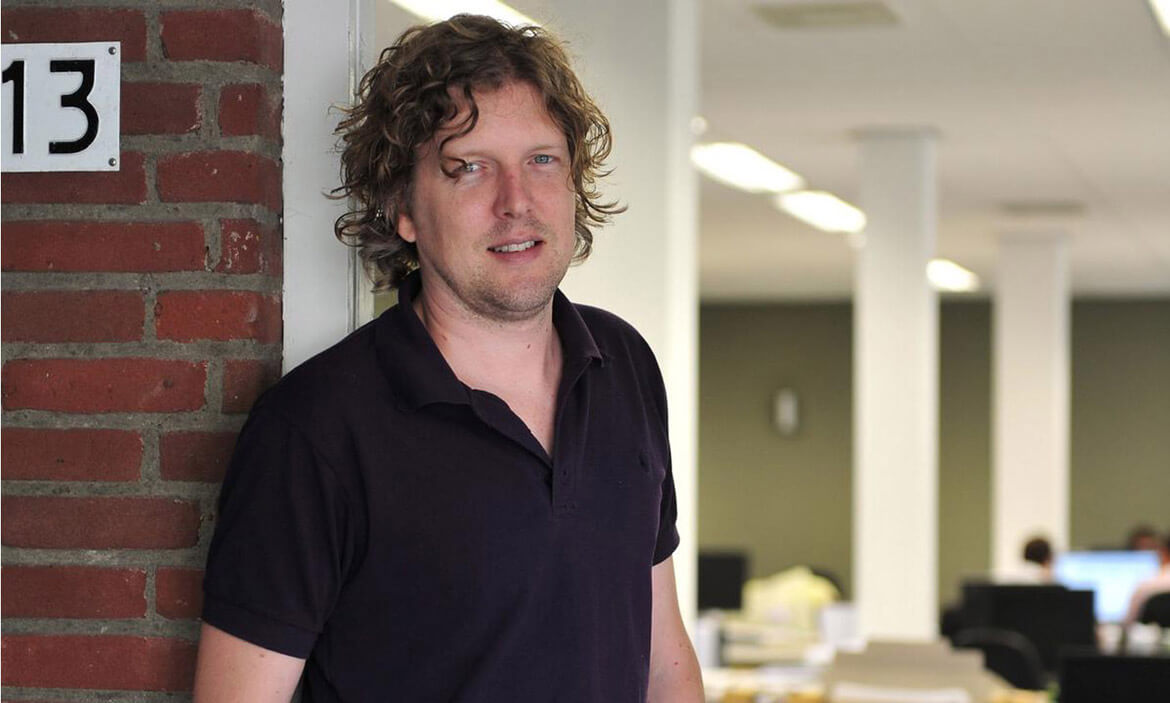
The UP Experience, Oct 2012
Dutch-architect Koen Olthuis argues the future of some communities may be over water as climate change contributes to rising sea levels. The founder of architectural firm Waterstudio NL, Olthuis specialized in creating floating communities and cities. His UP Experience presentation, “A sustainable future on the waterfront,” elaborates on his plans and the potential need for buoyant buildings in the future.
Créer des îlots et coloniser l’ocean, Aujourd’hui Magazine
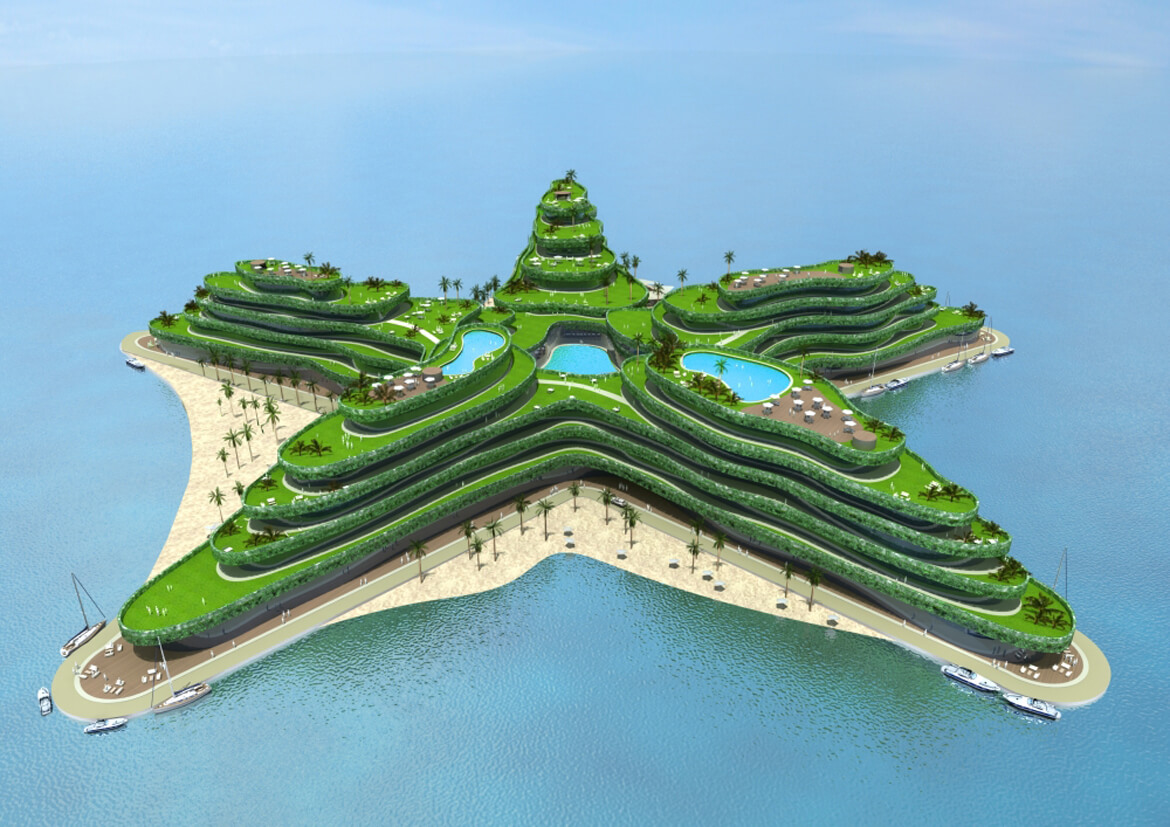
Aujourd’hui Magazine, Thomas Leroy, Oct 2012
Alors que la montée des eaux due au réchauffement climatique préoccupe de plus en plus d’Etats, les structures artificielles flottantes offrent une solution crédible.
Nous sommes à court de possibilités, donc, nous les envisageons toutes. » Anote Tong, le président de Kiribati, un petit Etat insulaire niché au milieu du Pacifique, est engagé dans une course contre la montre. Dans cinquante ans, ses 33 îles seront les premières à être englouties par les océans.
Il y a un an, lors du Forum des îles du Pacifique, il a évoqué devant ses pairs une solution surprenante : si son atoll est voué à disparaître, pourquoi ne pas en construire un nouveau ? De nombreux pays sont dans une situation similaire, comme le Bangladesh ou les Pays-Bas. Menacés par la montée des eaux, ils sont aujourd’hui tentés par l’idée de construire des espaces habités sur l’océan.
Un territoire nomade
L’idée existe depuis longtemps. En témoignent les polders hollandais ou les terre-pleins, comme celui de l’aéroport de Kansai au Japon ou celui de Hong-Kong. « Le problème, c’est qu’il n’y a plus de place pour faire des polders », explique Jean-Marc Laurens, enseignant en architecture navale à l’Ensta-Paristech.
Quant aux terre-pleins, ils impliquent des eaux peu profondes et détériorent l’écosystème. Alors, pourquoi ne pas construire des villes flottantes, comme l’avait imaginé Jules Verne en 1895 dans L’Ile à l’Hélice ?
A petite échelle, la méthode fait ses preuves : à Paris, la piscine Joséphine-Baker flotte depuis 2006 sur la Seine. « C’est techniquement faisable, assure Jean-Marc Laurens. L’idée serait d’utiliser des flotteurs en acier et d’y poser une plate-forme. Ce système est déjà utilisé pour construire les plate-formes pétrolières. »
Pour faire les choses en grand, d’après l’ingénieur, « il faut compter deux années d’études pour concevoir une île qui accueillerait 5 000 personnes ». Ces perspectives enflamment l’imagination des bâtisseurs. L’architecte belge Vincent Callebaut a imaginé en 2008 Lilypad, un « territoire nomade 100 % autosuffisant » dont la forme rappelle un nénuphar et qui pourrait accueillir 50 000 personnes.
Avec ses 500 m de diamètre, ses 60 m de haut et autant sous l’eau, cet ovni marin produira sa propre énergie grâce aux hydroliennes qui parsèment sa coque, ses panneaux solaires et son lagon central qui récupère les eaux de pluie. Pour le réaliser, l’architecte s’appuie sur un énorme flotteur circulaire, lesté par le lagon central qui lui donnera sa stabilité. « Sur le papier, ça fonctionne. En pratique, 1/5 de la technologie n’est pas encore au point.»
Techniquement réalisable
De la science-fiction ? Pas du tout. « Nous attendons le feu vert des investisseurs pour construire deux prototypes de 150 m de diamètre, explique Vincent Callebaut. Nous espérons signer un contrat d’ici à 2015. »
Ses premiers Lilypads devraient embarquer pour la Chine et Abou Dhabi, là où l’enthousiasme pour ces projets est le plus grand. « En France, constate Vincent Callebaud, on nous dit que ce n’est pas possible en raison des changements de réglementations que cela entraînerait. Dans les pays émergents, la réponse est plutôt : ‘‘on commence quand ?’’ »
Plus que les Etats ou les villes, ce sont les investisseurs privés qui croient au concept. Au Japon, le Green Float reprend le principe d’une île-ville à la dérive avec des dimensions encore plus importantes. L’entreprise Shimizu prévoit d’en lancer la construction en 2025.
Ben Way, un jeune entrepreneur anglais qui vit à Los Angeles, veut créer une île artificielle de la taille de Manhattan, soit 60 km2 ! « On peut faire une île de n’importe quelle dimension, techniquement, c’est très faisable », explique-t-il.
Il peine néanmoins à trouver des financements. L’argent, c’est là que le bât blesse. A la fin des années 1990, le projet d’île-paquebot AZ de 400 m de l’architecte Jean-Philippe Zoppini, en collaboration avec Alstom, avait échoué surtout en raison de son coût, évalué à 2,5 milliards d’euros. Lilypad coûte plutôt cher. « Nous avons évalué le coût du prototype à 10 000 euros le mètre carré », explique Vincent Callebaut. Soit 1,5 milliard d’euros l’ensemble !
« Ce sera vite amorti, promet-il, notamment parce que l’île produira elle-même son énergie. » Il faudra également résoudre l’obstacle juridique. Quel statut donner à une structure sans attache, qui pourrait naviguer ? Ben Way imagine son île comme « un moyen de créer une civilisation sans restrictions ».
Des projets d’îles-banques
Cette incertitude fait fantasmer les investisseurs. « Il y a eu des projets d’îles-banques qui se réfugieraient dans des mers sans régime fiscal », s’amuse Jean-Marc Laurens. A plus courte échéance, les Maldives auront leur première île flottante en 2014.
Conçue par l’architecte néerlandais Koen Olthuis, Greenstar accueillera des milliers de personnes. Doté d’un centre de conférences, cet hôtel en forme d’étoile verte réunira d’ailleurs les acteurs de la lutte contre le changement climatique, comme pour rappeler la raison première de son existence: la montée du niveau des océans. « On va être obligé de faire des îles artificielles, prévient Jean-Marc Laurens. L’avenir, c’est la mer. »
TED Talk of Koen in Hasselt great success
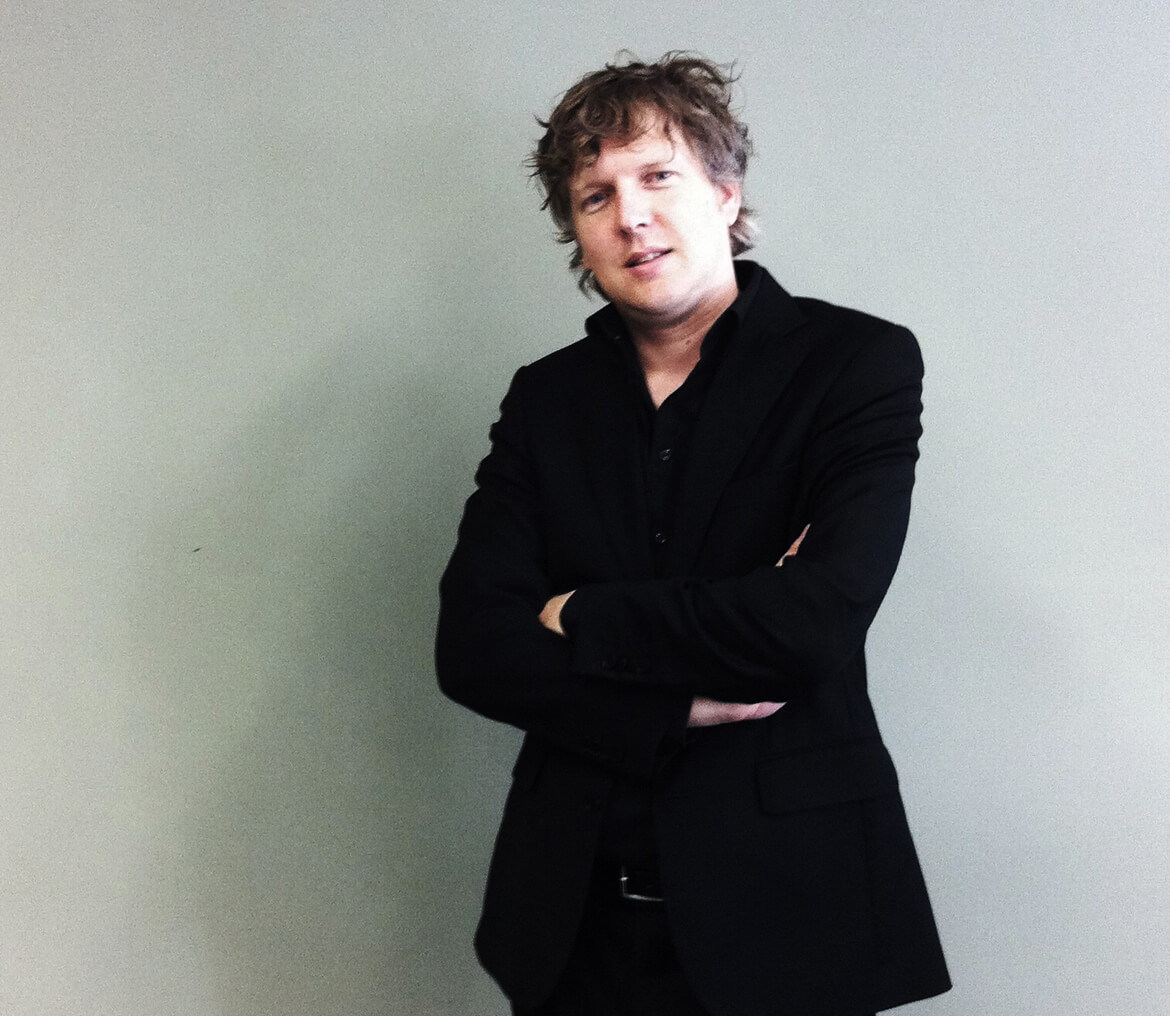
Koen Olthuis did a talk at the TEDx at the university of Hasselt in Belgium.
Ocean Flower is now for sale!
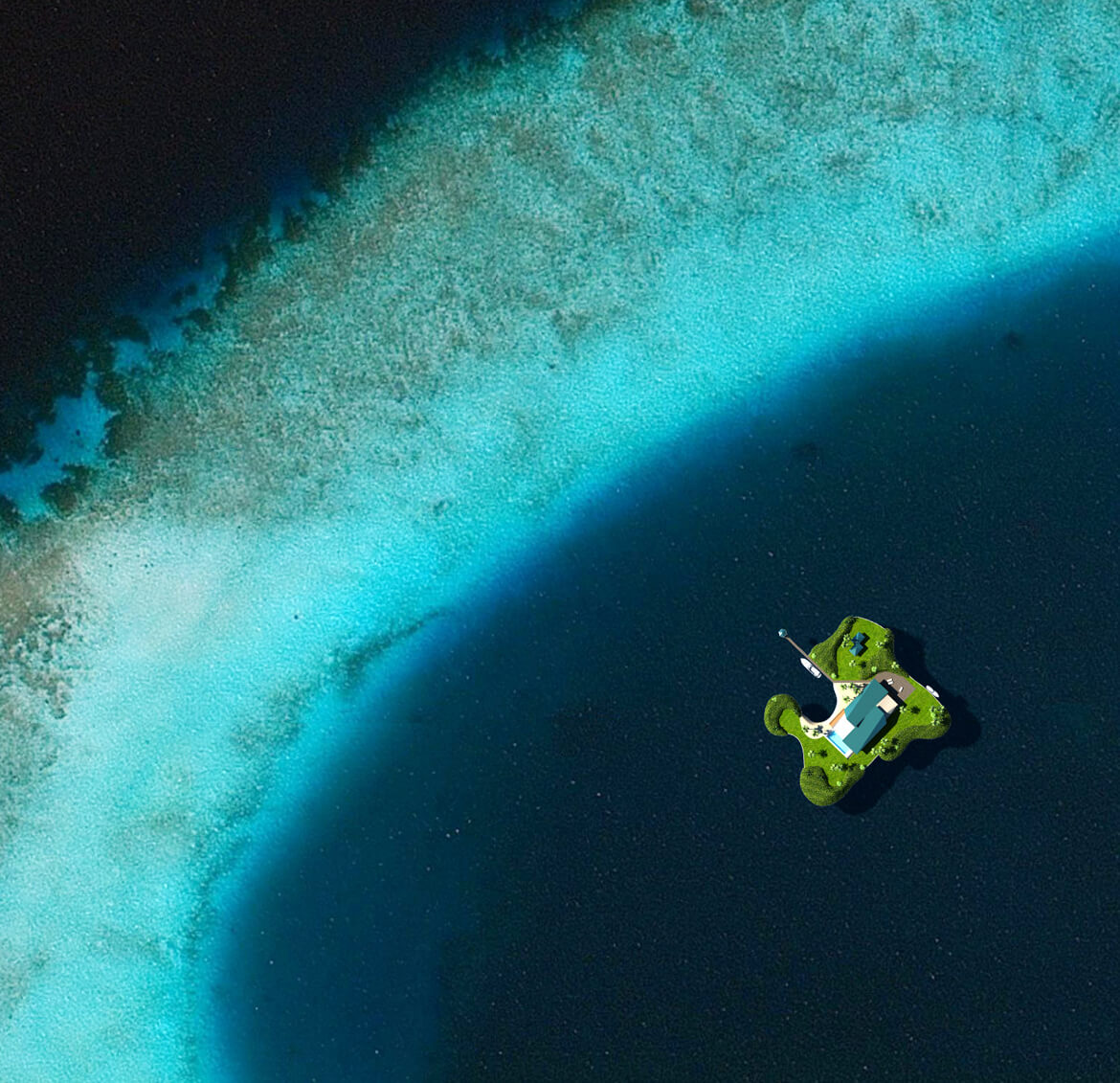
The first phase of 185 floating waterfront villas,all with private pool is now for sale.
Interview Koen Olthuis at Venice Biennale
An interview with Koen Olthuis of Waterstudio.NL on the Venice Biennale for the exhibition “The Dutch Way” in the British Pavilion
Click here to visit our Youtube channel
